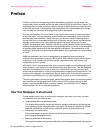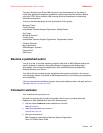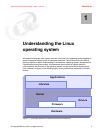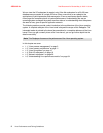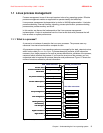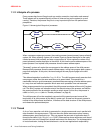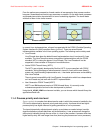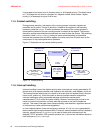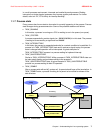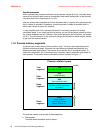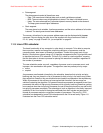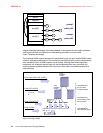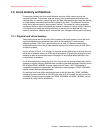
4285ch01.fm Draft Document for Review May 4, 2007 11:35 am
4 Linux Performance and Tuning Guidelines
1.1.2 Lifecycle of a process
Every process has its own lifecycle such as creation, execution, termination and removal.
These phases will be repeated literally millions of times as long as the system is up and
running. Therefore, the process lifecycle is a very important topic from the performance
perspective.
Figure 1-3 shows typical lifecycle of processes.
Figure 1-3 Lifecycle of typical processes
When a process creates new process, the creating process (parent process) issues a fork()
system call. When a fork() system call is issued, it gets a process descriptor for the newly
created process (child process) and sets a new process id. It then copies the values of the
parent process’s process descriptor to the child’s. At this time the entire address space of the
parent process is not copied; both processes share the same address space.
The exec() system call copies the new program to the address space of the child process.
Because both processes share the same address space, writing new program data causes a
page fault exception. At this point, the kernel assigns the new physical page to the child
process.
This deferred operation is called the
Copy On Write. The child process usually executes their
own program rather than the same execution as its parent does. This operation is a
reasonable choice to avoid unnecessary overhead because copying an entire address space
is a very slow and inefficient operation which uses much processor time and resources.
When program execution has completed, the child process terminates with an exit() system
call. The exit() system call releases most of the data structure of the process, and notifies
the parent process of the termination sending a certain signal. At this time, the process is
called a
zombie process (refer to “Zombie processes” on page 8).
The child process will not be completely removed until the parent process knows of the
termination of its child process by the wait() system call. As soon as the parent process is
notified of the child process termination, it removes all the data structure of the child process
and release the process descriptor.
1.1.3 Thread
A thread is an execution unit which is generated in a single process and runs in parallel with
other threads in the same process. They can share the same resources such as memory,
address space, open files and so on. They can access the same set of application data. A
thread is also called
Light Weight Process (LWP). Because they share resources, each thread
should take care not to change their shared resources at the same time. The implementation
of mutual exclusion, locking and serialization etc. are the user application’s responsibility.
parent
process
child
process
child
process
zombie
process
parent
process
wait()
fork()
exec() exit()
parent
process
child
process
child
process
zombie
process
parent
process
wait()
fork()
exec() exit()




